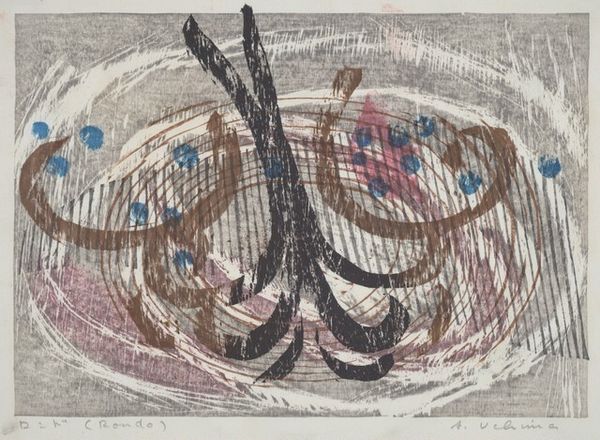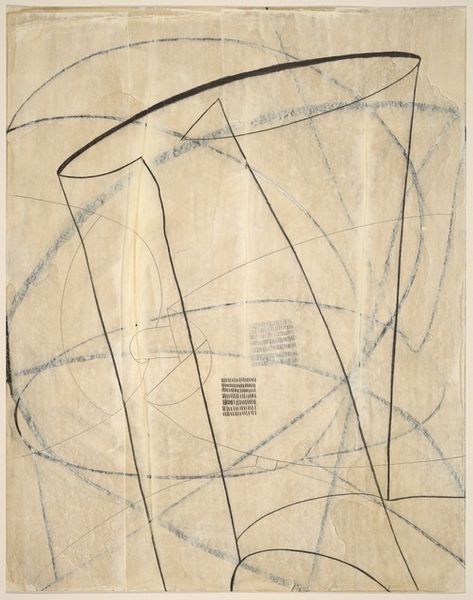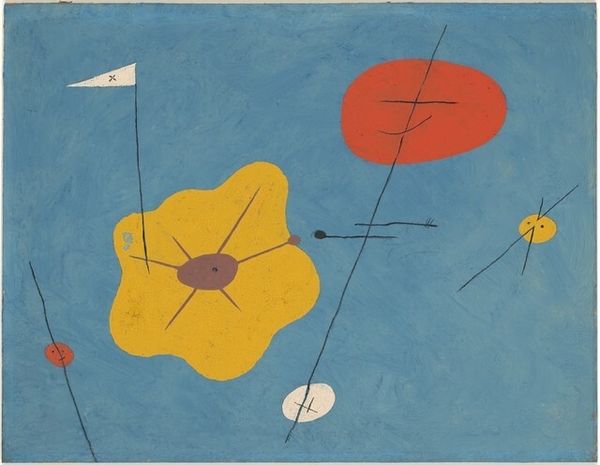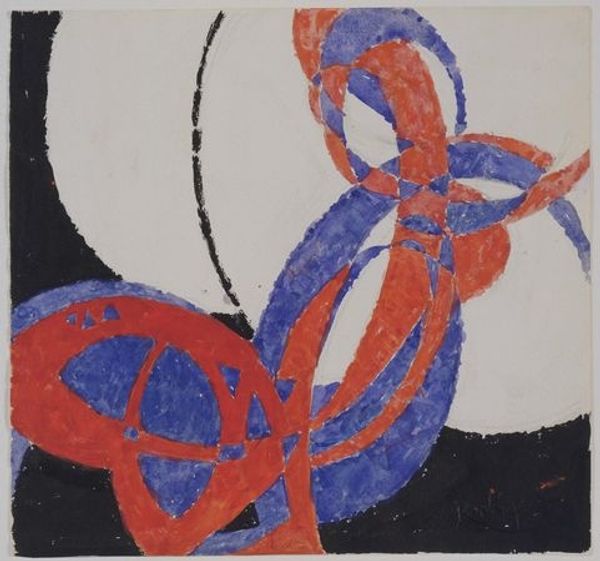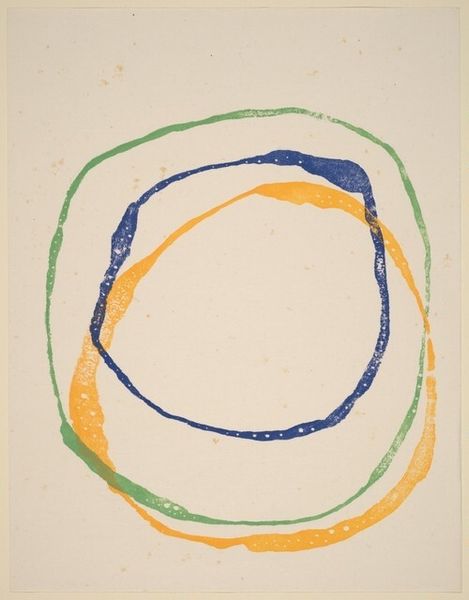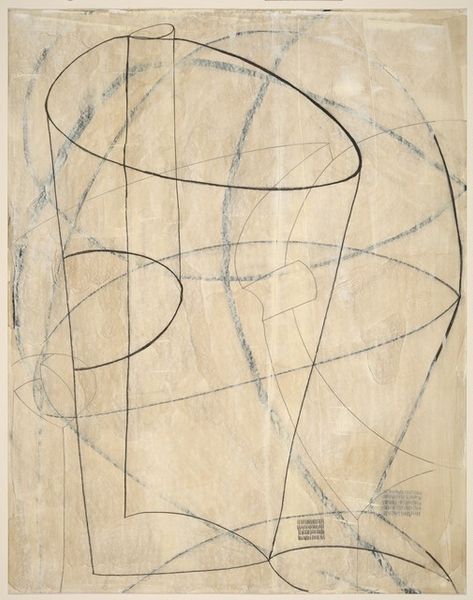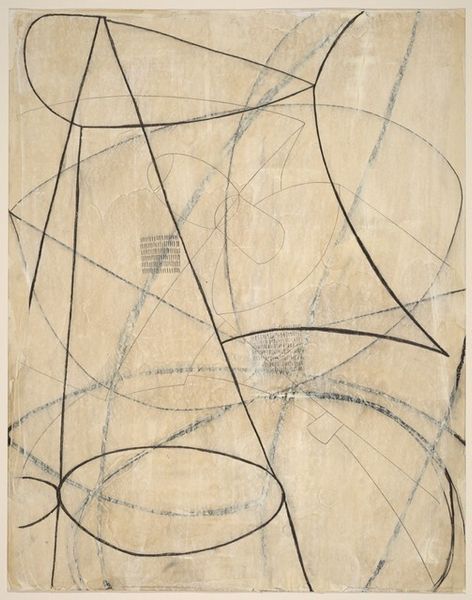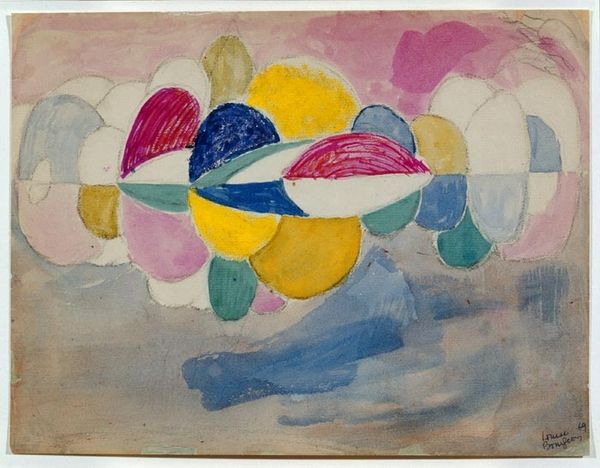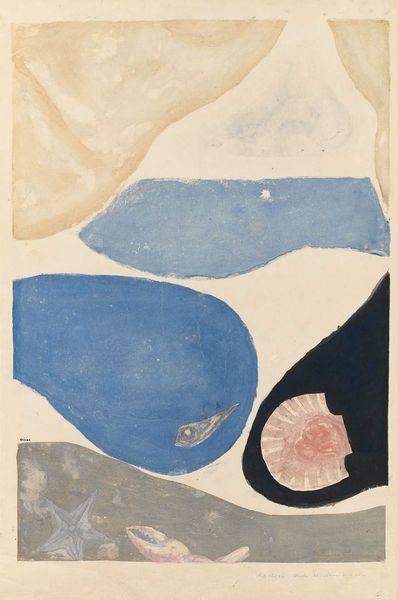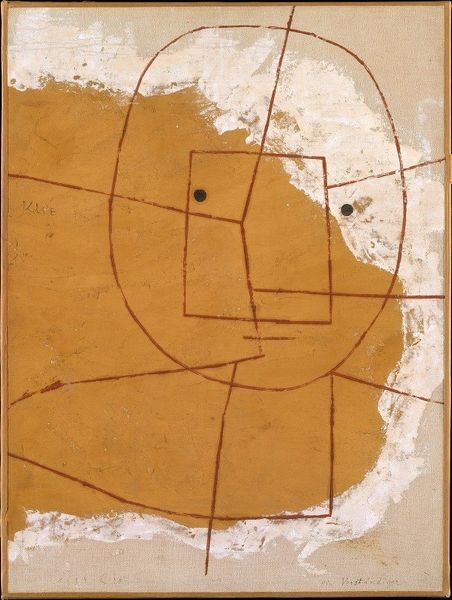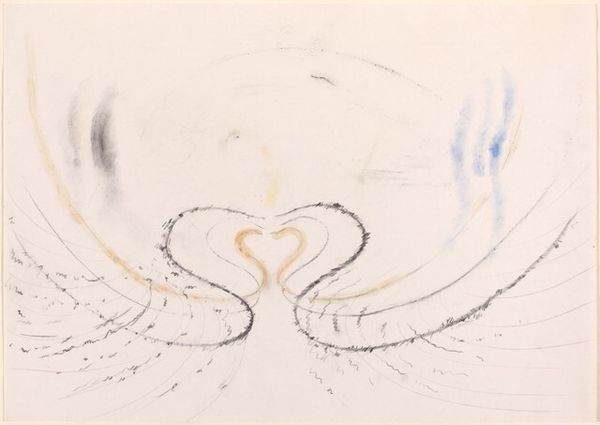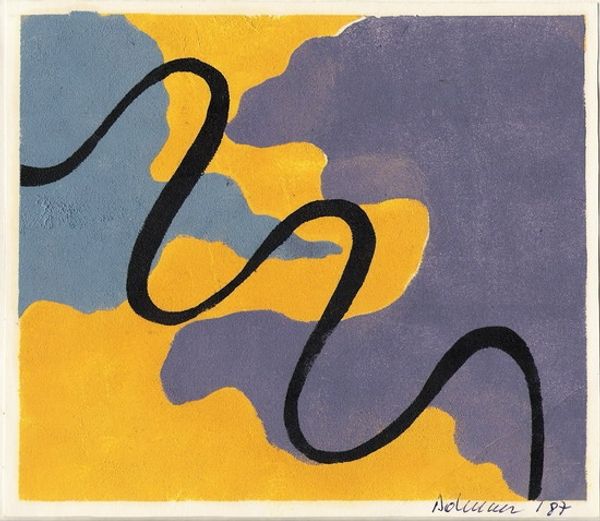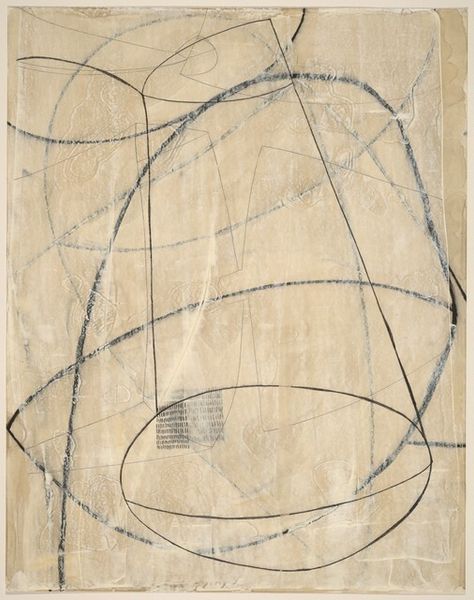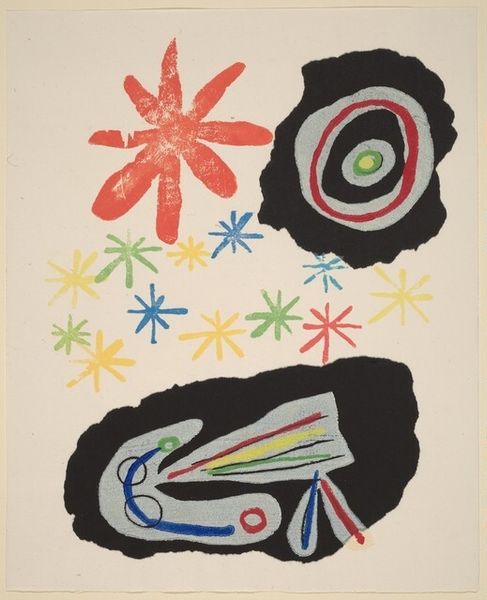
Copyright: Public Domain: Artvee
Curator: Welcome. We are looking at Hilma af Klint's "The Seven-Pointed Star No. 1," painted in 1908 using watercolor. Editor: Immediately, I'm struck by its almost ethereal quality. It’s delicate and somewhat understated, creating a calming sense of lightness. Curator: Precisely. Consider the radiating lines, the composition, the interaction of yellow and blue – these elements create a balanced structure, like a blueprint for higher-dimensional geometry. The use of watercolour adds to this lightness by its fluid, almost ephemeral, blending of pigment with paper. Editor: Yes, but isn’t it more than just aesthetics? We have to consider Klint's background as a spiritualist. These geometric shapes and colours were very deliberate and carry symbolic weight within her esoteric belief system, including the star and contrasting lines which seem to gesture toward both internal conflict and unity. The painting can be understood as a map toward enlightenment during the rising tide of scientific positivism. Curator: The forms do suggest layers of symbolism, certainly. It's difficult not to see the shapes resonating with some transcendental meaning. But even without this external context, the arrangement— the converging lines balanced by the floating circle above, gives the picture formal integrity and balance. I focus on the ways these features allow one to decode the very intention of Klint, and to apply concepts from diverse thinkers. Editor: The floating red circle feels significant. Perhaps, even in its bright solitude, the shape questions universal interconnectedness. It serves to push viewers into their subjective identities rather than be at one with the collective conscious. And given its time period and Klint’s position as a woman, are these images also her protest of conventional, academic standards set forth to maintain patriarchy? Curator: Intriguing—and a question worthy of future analyses, for sure. In focusing solely on the elements, structure, and construction, this watercolor opens itself to possibilities unbound to context or lived experience. Editor: Agreed. Whether you approach it through a formal lens or consider its place in social history, Klint’s painting makes us rethink the accepted frameworks that were meant to define abstract art at the time.
Comments
No comments
Be the first to comment and join the conversation on the ultimate creative platform.
